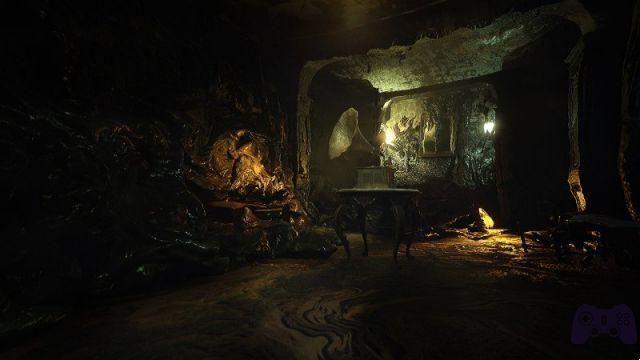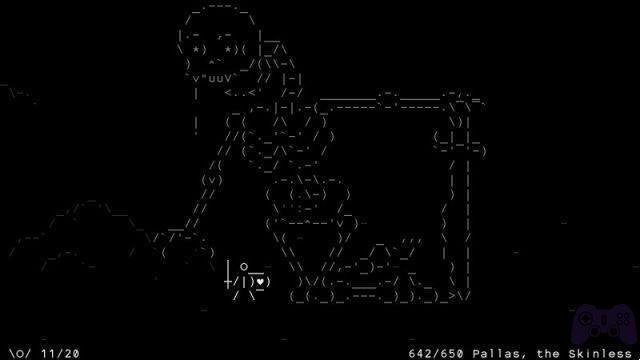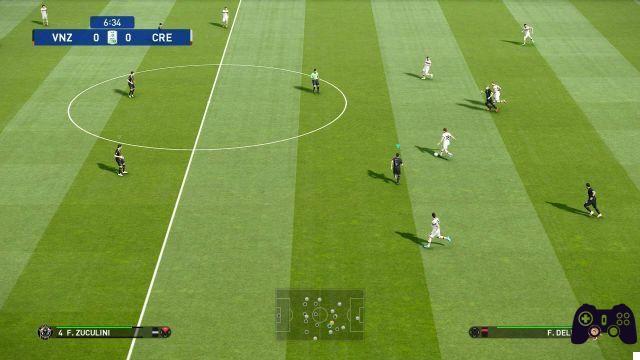The mystery around Little Nightmares as a franchise it is one of the engines that continue to fuel the fascination of the creation of Tarsier Studios. Little nightmares ii, as we had already guessed in our tests, it was the umpteenth ode to this feeling of discovery, to putting the player under pressure in an attempt to find what lies behind the construction of these nightmares for "children". Living a video game like this, between a thousand theories and sharing in the community, is a truly rare relationship in the era of everything and immediately, where everything must be clarified and slammed in the face of the consumer, holding him by the hand in a sense far from being only metaphorical. Little Nightmares II is the exact opposite of that philosophy: no dialogues, no texts, only symbols and scenarios to decipher.
In the first chapter this feeling it laid its foundations in the grotesque, in showing us the horror of a restaurant ship reminiscent of the Enchanted City of Miyazaki in a distorted key, transforming the role of the player slowly, subtly but firmly. Little Nightmares II has the task of continuing that line, but at the same time it is a product with an almost different tone in every part, so much so as to question its nature below. The common point, however, is the limited duration: longer than the first, Little Nightmares 2 accompanied us around 10 hours maximum, which is the average duration if you proceed calmly and explore the environment a bit. The game though lends itself to the repetition of chapters (5 in all) to hunt for collectibles and particular appearances with a key role for the title.
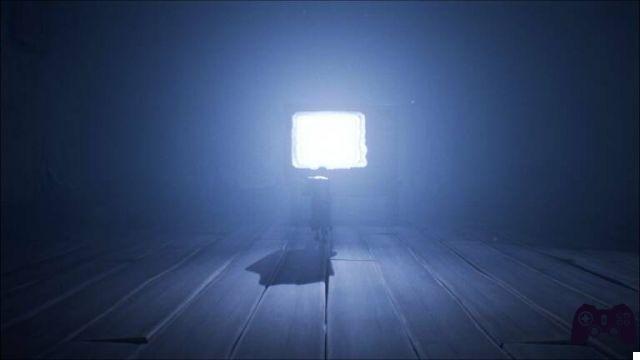
Let's stop this program
The beginning of Little Nightmares II can in fact appear decidedly confused and disconnected from the end of the first chapter, and for this reason we advise you to retrieve the comics free at least to get some clues about the game world and its characters. Regardless of your desire to read these comics, Little Nightmares II starts from the level of the Forest protagonist of the public demo and one of our previews: the setting that serves more to introduce you to the basic mechanics and reconnect Six with Mono, the actual protagonist of this chapter.
Talking about the specific story, given the short duration of the game, would ruin the overall experience that awaits you in the title, which it's a lot about twists and on knowing how to find all the secrets and references present in its levels on your own. The journey of Little Nightmares II is in fact a path that aims to put the player in a point of view that starts from the outside - the Forest - and then gradually advances inside the City of the Signal: The true location of the game and an essential element in the world of Little Nightmares as a franchise. Everything originates from that place that stands out among the folded buildings, including the effects we could perceive in the Maw of Little Nightmares and in the mini adventure of Very Little Nightmares.
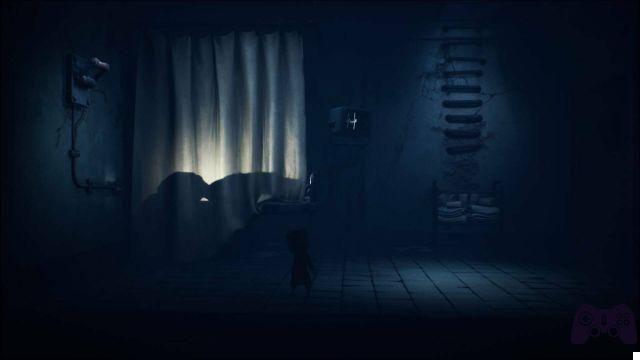
At the same time, the structure of Little Nightmares II is the exact opposite of that adopted in the restaurant ship. In the first, the player is made clear that it is necessary to escape from inside the structure to reach the freedom of the outside world, to escape from the nightmare and preserve normality (at least, until the final plot twist). Here instead the task is to pass from the outside to the beating heart of the story, drowning in the nightmare and fishing for answers with difficulty. It may seem like a minor change, an obvious consequence of the sequel continuum, but at the level of personal perception it is a completely different statement and sets a different feeling, one that puts at the center of the experience not survival as in the Maw, but the search for truth, the exploration of the nerve center of the imagination of Tarsier Studios. Sure, too in Little Nightmares II there are nightmares to survive, one per level as you will imagine, but they are perceived more as obstacles to understanding rather than keepers intent on chasing us away, eating us.
Let's take for example the Teachers, seen in trailers and our previews. The Teacher is not an evil character per se, she simply teaches an army of killer dolls but if we hadn't entered her domain she would never have had reason to look for us. In the Maw, on the other hand, more than intruders to be eliminated, we were food to be consumed, and in any case we were forced to face them because of our need to escape. Here we don't have to flee, rather we have to overcome what is simply in between us and the goal, a feeling that the game pushes a lot considering that Mono and Six often respond to aggression, they have occasional tools to kill their enemies and often do so cruelly. An example? The shot at the Hunter seen in the demo, but there are also others but we want to let you savor the moment. However, each of them makes us ask questions about the true nature of our mission, on what is the ultimate goal of the actions and if this disguised survival is, finally, really just a need to continue to breathe.
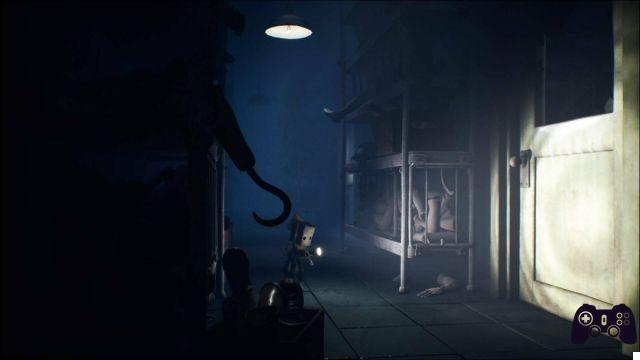
And it is on this precarious balance that Little Nightmares II constantly balances itself, exploiting the horror to keep us on our toes and then concluding it in the enigma, in the unspoken silences that accompany the end of each act. It undermines the player's mind by hitting him at every scenographic detail of the suggestive settings, where the camera focuses on figures watching TV in a tub, or on rag hands coming out of isolation cells, or on Six's unique animations. interacting with the world around it. In these breaks Little Nightmares II shows its purest nature, the one that makes the work of Tarsier Studios the macabre diorama that we all appreciate despite its repulsive implications. The tranquility, moreover, serves to make exposure of the game world, to illustrate the characteristics of the City of the Signal and the messages that aesthetics want to communicate to the player. Both symptoms of an excellent artistic direction about which we had no doubts from the beginning.
Instead, what has come to us as completely new is what is towards the end of the game, the classic twist of the last levels that in this case has put more doubts than certainties. While this may be an advantage for many, and we are sure there will be no shortage of theories in this regard, we were expecting perhaps a little more clarity from this second chapter, which however hides a secret scene that allows you to have some more clues about the plot of the game. However, in general, Little Nightmares II leaves us only half of the answers we were looking for and fills us with other questions, assumptions and doubts.
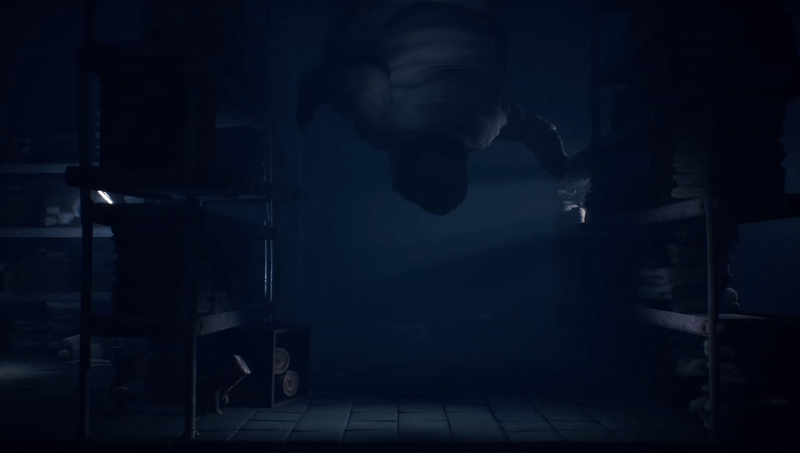
A similar effect, also due to the particular industrial aesthetic of the new chapter, to what you feel when you live for the first time Inside di Playdead, Where the conclusion becomes an interpretative act and takes on different meanings depending on the perspective from which one looks at it. In Little Nightmares II, in a certain sense, there is this interpretative potential but it does not have that clear cut that allows you to close the story as, for example, happened for The Maw. Loving the mystery and waiting to know what's next, it is difficult to see this point as a flaw, on the other hand from an analysis point of view of the overall story, we cannot fail to consider Little's closing lines. Nightmares II an element perhaps too much lying in its darkness, so much so that it seems disconnected from what is the initial premise.
Now in color
The major innovations compared to its predecessor, however, are really evident and mainly concerning two well-connected aspects: the artistic direction and the gameplay. By surpassing the Maw, Tarsier's creatives gave birth to a city characterized in every aspect and full of breathtaking views, so much so that the glance is the feature that will most attract you to the coils of Little Nightmares II. When we talked about breaks just now we were referring to those dictated by the scenes in which it is evident that the development team has really trodden the hand with sending a message to the player, among which we can mention all the moments where we observe the " monsters ”in their routine.
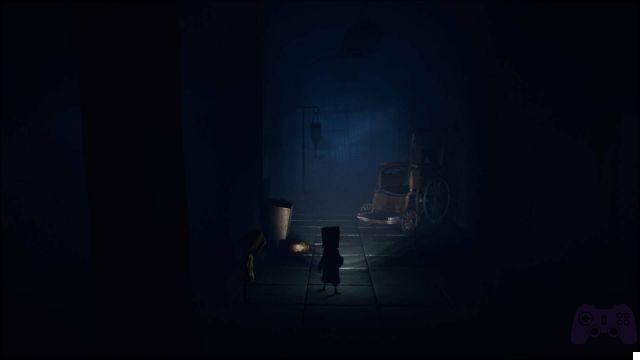
Never mere pursuers, rather citizens of a gloomy city in style Tim Burton doing their thing away from the main story camera. This is why it is difficult to call Little Nightmares a horror game, even if it is for obvious reasons. It is the art direction that gives it those gray areasand where it is realized that it is not so much a hunt for the innocent as a balance of a strange world that we witness by a sad coincidence of fate, a thought made evident by how normal actions such as eating or watching TV are artfully distorted, as well as a strong point of Tarsier's aesthetic philosophy.
Little Nightmares II, however, has the advantage of make us abandon the feeling of being mere prey and rather to be an integral part of this world, allowing Mono to act in different ways through gameplay devices. Each level is different and each of the levels may or may not rely on individual gadgets, among which the most important is certainly the one related to TVs and the way in which their use is reflected in the plot. The genius of Tarsier's level design is right in the knowing how to innovate at each section, never making oneself repetitive and entrusting many of its elements to other functions of the game.
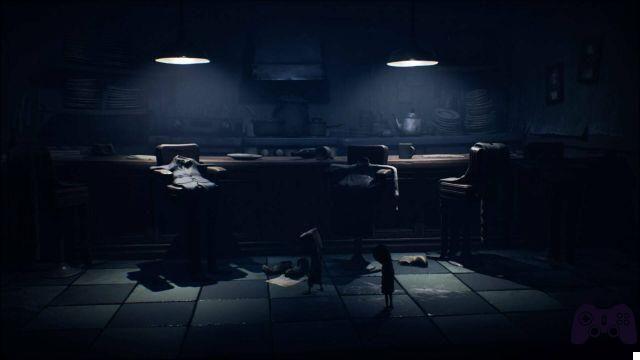
In Little Nightmares II specifically there is a great importance in the use of audio and soundtrack, exploited not only musically but also as real indicators for the player's actions, as well as to transform into anchors for the memory of those who have followed the series from the beginning. As with the rest of the title, attention to detail is the real pride of Little Nightmares and there are plenty of them here, especially if you're the kind of person who wants to interact with everything to find every secret (and there are quite a few).
The only real drawback in this sense is the combat system, if we want to call it that, that in the school level it has become more of a hindrance than a welcomed feature. In one section in particular, the player is asked to clean up a series of porcelain bullies intent on attacking us. There are several of them and they will attack in packs, forcing Mono to defend himself with a hammer too heavy for him. The very slow animation due to the size of the child makes each shot a unique chance to hit and miss even one of these children takes you back to the beginning of the corridor after death. Of course the uploads are hyper fast, especially if like us you play the next-gen or PC version, but the frustration of having to go back to take the hammer and slowly make up all the meters of the corridor due to a woody fighting system remains.
That was the only point where we had problems with the gameplay of the game, stellar the rest of the time if you rule out some unregistered "grabs" or identification of Mono even when it was hidden. The important thing, as underlined, is that Little Nightmares II has never expired in monothematicity, not skimping on the way it entices the player to interact in the levels, and is a very essential feature to give value to an adventure of such short duration.




